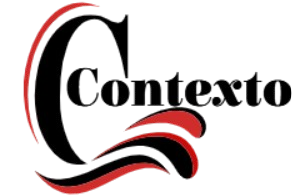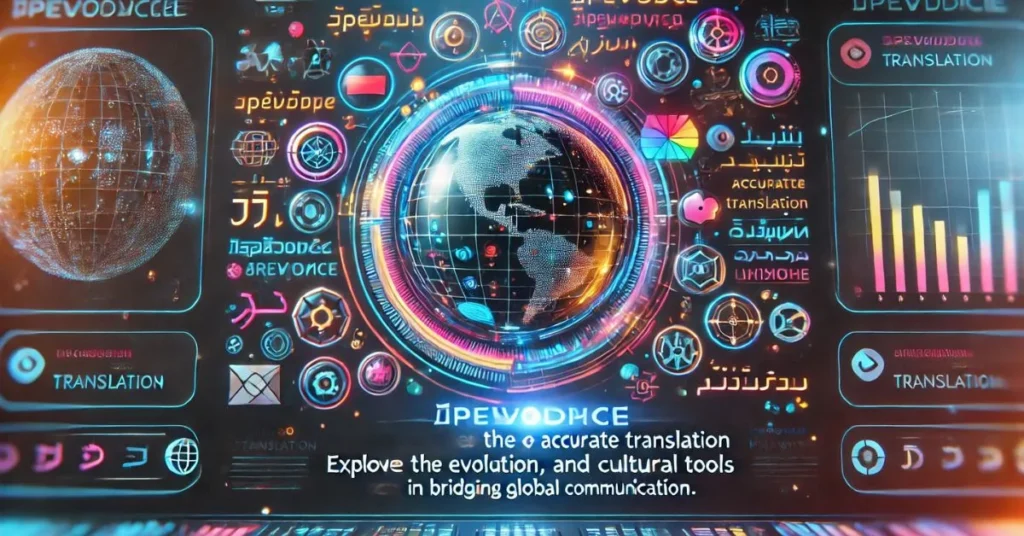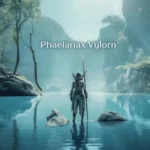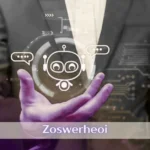In our ever-globalizing world, the art of translation plays a crucial role in bridging cultures, connecting minds, and ensuring that ideas traverse language barriers effortlessly. The term преводсч encapsulates not only the act of converting words from one language to another but also the profound influence that accurate translation has on understanding and communication. This article delves into the world of translation, its evolution, the modern practices that govern it, and the undeniable impact that accuracy in translation can have in various domains.
Introduction to Accurate Translation
What is преводсч?
преводсч is a term that, though it might appear unique or unfamiliar to many, represents the essence of translation in its purest form. At its core, преводсч emphasizes the necessity of converting content in a way that preserves meaning, tone, and context. Imagine trying to explain a complex concept in a language you’re just learning—if the translation is off, the meaning can be distorted, leading to confusion and misunderstandings. This is where accurate translation shines, ensuring that every nuance is captured and communicated correctly.
The Importance of Accuracy in Translation
Accuracy in translation is not merely about word-for-word conversion. It’s about understanding context, culture, and the subtle intricacies of language. An accurate translation ensures that the original message, emotion, and intent are maintained. Whether it’s a legal document, a piece of literature, or technical content, accuracy is paramount. Consider it as the difference between having a conversation with a friend and using a translator app that might not pick up on your inside jokes or colloquialisms—the human touch matters.
Historical Background
Evolution of Translation
Translation has come a long way from its ancient roots. Early translations were often done by scholars and monks who meticulously copied texts by hand. Over centuries, translation evolved from a laborious manual process into a refined art form. With each era, translators not only had to master multiple languages but also become cultural ambassadors, ensuring that the subtleties of one culture were conveyed to another. This historical journey is a testament to the enduring human quest for understanding across linguistic boundaries.
Role of преводсч in Cultural Exchange
The role of преводсч extends beyond mere language conversion; it is a bridge between civilizations. Throughout history, accurate translations have enabled the exchange of ideas, philosophies, and innovations. Ancient texts that shaped civilizations were translated and shared, fostering intellectual growth and cross-cultural dialogue. Today, as our world becomes more interconnected, преводсч continues to be at the forefront, ensuring that global communication remains effective and respectful.
Modern Translation Practices
Technological Advancements in Translation
In the digital age, translation has witnessed revolutionary changes, thanks in large part to technological advancements. Modern translation tools, including computer-assisted translation (CAT) software and neural machine translation (NMT) engines, have significantly improved the speed and efficiency of translation processes. These technologies leverage artificial intelligence to analyze vast amounts of data, learning from patterns and delivering translations that are both rapid and contextually accurate. However, while these tools are incredibly useful, they are not infallible. The human element remains crucial in ensuring that translations are not just accurate but also culturally relevant.
Human vs Machine Translation
The debate between human and machine translation is ongoing. Machines excel in processing large volumes of text quickly and handling repetitive tasks with remarkable consistency. On the other hand, human translators bring a level of intuition, creativity, and cultural sensitivity that machines currently cannot replicate.
Benefits and Limitations
- Machine Translation:
- Benefits: Speed, consistency, and the ability to handle large datasets.
- Limitations: May lack nuance, cultural sensitivity, and the ability to interpret context accurately.
- Human Translation:
- Benefits: Deep understanding of language nuances, context, and cultural references.
- Limitations: Time-consuming, potential for human error, and often more costly.
The interplay between these two forms of translation often results in a hybrid approach where machines handle the bulk of the work, and human translators refine and perfect the final output.
Challenges in Translation
Linguistic Nuances
Every language is a tapestry woven with unique idioms, metaphors, and expressions. A word-for-word translation might strip a sentence of its intended meaning. For example, phrases that are deeply embedded in one culture may have no direct equivalent in another. This is where the translator’s skill comes into play, requiring a deep understanding of both the source and target languages to find the right balance between literal translation and creative adaptation.
Cultural Sensitivities
Culture shapes language. Certain phrases, jokes, or cultural references can be easily misinterpreted if not translated with care. Translators must be aware of cultural sensitivities and historical contexts to ensure that their work does not inadvertently offend or misrepresent a culture. A great translator not only understands the language but also the cultural context behind every word, making преводсч a crucial tool for fostering respectful global communication.
Strategies for Accurate Translation
Best Practices in Translation
Achieving accuracy in translation involves following a set of best practices that have been refined over years of professional experience:
- Contextual Analysis: Before translating, it’s essential to understand the context of the content. What is the message? Who is the audience? This forms the basis of an accurate translation.
- Cultural Adaptation: Adjusting content to align with the cultural context of the target audience is key. This might involve changing idioms, cultural references, or even the tone of the text.
- Iterative Review: Multiple rounds of review by different translators can catch nuances that a single translator might miss. Collaboration ensures that the final product is polished and accurate.
- Feedback Integration: Listening to feedback from native speakers or target audience members can significantly enhance the quality of translation. This iterative process helps in refining the translation further.
Tools and Technologies
Modern translation practices are bolstered by a variety of tools and technologies that aid in achieving precision:
- Translation Memory Software: This tool stores previously translated segments, making it easier to maintain consistency across large projects.
- Glossaries and Terminology Databases: These resources ensure that specific terms are translated consistently, which is particularly important in technical or specialized fields.
- Neural Machine Translation Engines: Leveraging artificial intelligence, these engines learn from vast datasets and provide translations that are contextually aware, although human oversight remains essential for refinement.
- Collaborative Platforms: Online platforms allow teams of translators to work together seamlessly, sharing insights and ensuring that the final output is coherent and accurate.
Impact of Accurate Translation
Business and Global Communication
In the realm of international business, accurate translation is more than a convenience—it is a necessity. Companies expanding into new markets rely on precise translations to ensure that their brand message, legal documents, and marketing materials resonate with local audiences. Accurate translation builds trust, mitigates misunderstandings, and can be the difference between a successful international venture and a costly misstep. It’s like having a reliable guide in a foreign land, ensuring you navigate the complexities of language and culture with ease.
Academic and Literary Fields
Accurate translation opens doors to the world of academic research and literature. Scholars rely on translated works to access knowledge that transcends geographical and linguistic boundaries. Literary translations, in particular, demand an extra level of finesse as they not only convey the narrative but also preserve the artistic flair and emotion of the original text. When done right, accurate translation can introduce a masterpiece to a whole new audience, enriching both the source and target cultures.
Future of Translation and преводсч
Emerging Trends
The future of translation is exciting and dynamic. Emerging trends point towards a more integrated approach where technology and human expertise complement each other. With advancements in artificial intelligence and machine learning, translation engines are set to become even more sophisticated. However, these developments will continue to rely on human oversight to ensure that the nuances and subtleties of language are not lost in translation.
Innovation in Language Services
Innovation in language services is paving the way for more effective and efficient translation processes. Companies are investing in research to develop tools that not only translate but also provide context-aware adaptations. Augmented reality (AR) and virtual reality (VR) are being explored as platforms for immersive translation experiences, which could revolutionize language learning and real-time communication. The role of преводсч in this evolving landscape is pivotal, acting as the linchpin that ensures technology remains aligned with the art of human communication.
Conclusion
The journey of translation, encapsulated by the term преводсч, highlights the power of accurate translation in fostering global understanding. From its historical roots to its modern-day applications, translation has evolved into a critical component of communication across diverse fields. Whether it’s bridging the gap in international business, enhancing academic research, or enriching literary experiences, accurate translation is an indispensable tool in our interconnected world. As technology continues to advance, the synergy between machine precision and human creativity promises to elevate the standards of translation even further, ensuring that every word carries its intended weight and meaning.
In the end, accurate translation is not just about converting text—it’s about building bridges between cultures, preserving the essence of human expression, and making the world a smaller, more understanding place. Embracing the challenges and opportunities of translation will undoubtedly continue to shape our global landscape, proving that in every language lies the power of connection.
FAQs
What exactly does преводсч mean in the context of translation?
преводсч is a term that signifies the art and process of translation, emphasizing the need for precision, cultural sensitivity, and accurate communication between languages.
Why is accurate translation so important for global businesses?
Accurate translation ensures that brand messages, legal documents, and marketing materials resonate with diverse audiences, building trust and avoiding miscommunication in international markets.
How do modern translation tools improve the accuracy of translations?
Tools like translation memory software, neural machine translation engines, and collaborative platforms help maintain consistency, reduce errors, and enhance contextual understanding in translations.
What are the main challenges faced in achieving accurate translations?
The primary challenges include dealing with linguistic nuances, cultural differences, and the inherent limitations of both machine and human translation processes. Translators must balance literal accuracy with creative adaptation.
How is technology expected to influence the future of translation?
Technological advancements are expected to refine machine translation capabilities further, while human expertise will continue to ensure that cultural and contextual subtleties are preserved, leading to a more integrated and effective translation process.






